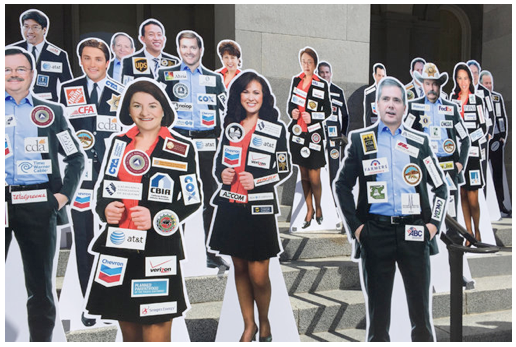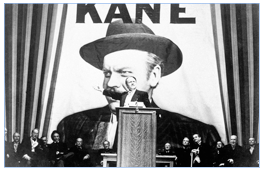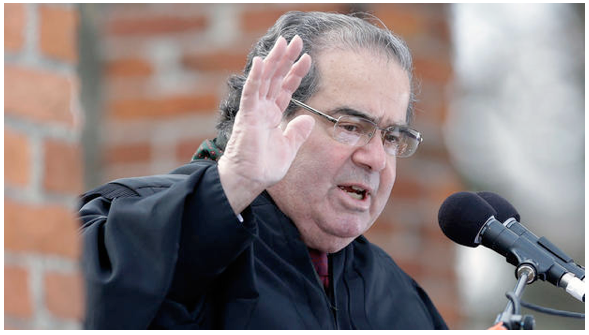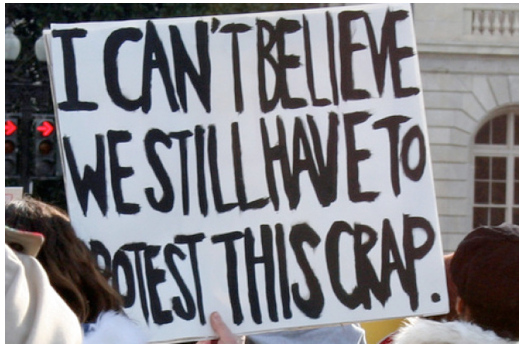EDITOR’S PICK--In 1905, Eugene V. Debs, the popular labor activist and Socialist Party leader, had a speaking engagement in Rochester, New York and went to visit the aging women’s rights pioneer Susan B. Anthony at her home there. They exchanged memories of their previous meeting; then Anthony took Debs’s hand and, with good humor, said, “Give us suffrage and we’ll give you socialism.” Debs’s good-natured reply was: “Give us socialism and we’ll give you the vote.”
The exchange crystallized what has often been a less good-natured debate on the American left. Over the course of this year’s Democratic primary, arguments between socialists and feminists have again come to the fore—never more so than in recent weeks, after the feminist icon Gloria Steinem claimed that young women were flocking to support democratic socialist Bernie Sanders, instead of Hillary Clinton, in order to meet young men. “When you’re young, you’re thinking: ‘Where are the boys?” Steinem said during an interview on Bill Maher’s TV show. “The boys are with Bernie.”
Clinton has been counting on women’s votes to win the Democratic nomination and the presidency. Unlike in her 2008 campaign, when she downplayed the breakthrough possibility of becoming America’s first woman president, this year she’s made it a centerpiece of her stump speeches.
But polls and election results reveal that the strategy isn’t quite working. In the New Hampshire primary, for example, Sanders won 53 percent of the female vote compared to Clinton’s 46 percent, according to ABC News’s exit poll. Among women under forty-five, 69 percent of Democratic women backed Sanders. National polls have found similar trends. And Steinem’s remarks triggered a backlash from women, especially younger women, who quickly spread the hashtag #NotHereForBoys across social media. (“Women for Bernie” signs were already a fixture at the candidate’s rallies.) Steinem soon apologized for her intemperate comment, but the controversy hasn’t died down.
It is easy to understand Steinem’s consternation. She was born in 1934 and came of age in the 1950s when women were treated like inferiors and second-class citizens in almost every aspect of society. She had to overcome many gender barriers to make her way in the world of journalism, which helped trigger her evolution as a feminist. Her work as a writer and activist catalyzed the “second wave” of the women’s rights movement that began in the late 1960s. She helped popularize feminist ideas. Her frequent articles, speeches, and appearances on TV made her feminism’s most prominent public figure.
In 1969, there were only ten women in the House of Representatives (there are eighty-eight today) and one in the Senate (compared with twenty today). At the time, the idea of a woman president felt like a distant dream. In fact, in 1969, only 53 percent of Americans said they would vote for a woman for president “if she were qualified in every other respect,” according to the Gallup Poll. By last year, that figure had increased to 92 percent. Now that it is finally possible to envision a woman in the White House, many veteran feminists like Steinem are eager for Hillary Clinton to turn that dream into a reality.
Many young women, who have benefited from the work of Steinem’s generation of feminists, take the accomplishments of the women’s movement for granted. Though much remains to be done to defend abortion, redress the gender pay gap, and stop domestic violence, millennial women don’t think that their gender limits their ability to enter most professions (including law, medicine, journalism, and engineering); they play sports in high school, college, and professionally; they count on male partners to do their fair share of housework; and they feel empowered to run for any office. Thanks to feminism, attitudes about gender have changed dramatically over the past few decades among Americans of all ages, women and men. But differences remain. For example, among Steinem’s generation (sixty-five and older), only 88 percent are willing to vote for a woman for president. Among those under thirty, 96 percent are willing to do so.
In that context, Steinem’s comment about Sanders’s female supporters seemed at best stuck in a time warp. Many young women activists resented Steinem’s implication that they had to support a mainstream liberal woman candidate over a progressive male candidate. Indeed, many of them believed that, based on his policy ideas, Sanders was not only more of an economic radical than Clinton but also as much of a feminist, as a longtime advocate for women’s right to an abortion, paid family leave, and LGBT rights, including support for same-sex marriage years before Clinton came around on the issue.
Both socialists and feminists—and, of course, the socialist-feminists who refuse this split altogether—recognize that the nation’s widening wealth and income gap, and the persistent difference between men and women in terms of pay and promotion, are part of the same problem and can’t be solved in isolation.
Indeed, despite what Debs and Anthony’s 1905 exchange might suggest, radicals of many stripes have long understood issues of class and gender as intertwined. In 1912, Charlotte Perkins Gilman—a writer, editor, lecturer, and activist who could be called the Gloria Steinem of her day—captured this attitude in her poem “The Socialist and the Suffragist.” Published in the socialist newspaper Appeal to Reason (which reached a paid circulation of more than half a million people), it is perhaps the most well-known testimonial to the ongoing debate about the relative importance of workers’ rights and women’s rights—class and gender—in the struggle for human emancipation.
In the poem, Gilman imagines a conversation between a socialist and a feminist. Its final verses offer a reconciliation between the two:
“A lifted world lifts women up,”
The Socialist explained.
“You cannot lift the world at all
While half of it is kept so small,”
The suffragist maintained.
The world awoke, and tartly spoke:
“Your work is all the same:
Work together or work apart,
Work, each of you, with all your heart—
Just get into the game!”
Around the time that Gilman composed that poem, feminism was making significant headway. In 1910, emulating the mass protests of the burgeoning labor movement, the Women’s Political Union organized the nation’s first large-scale suffrage parade in New York City. That year, Washington granted women the right to vote followed by California in 1911. By 1912, nine states had granted women the vote. In 1913, Alice Paul and Lucy Burns organized the Congressional Union, later known as the National Woman’s Party, which published a weekly paper and staged demonstrations, parades, mass meetings, picketing, hunger strikes, and lobbying vigils to push for women’s suffrage and women’s rights at the federal level.
On March 4, 1913, the duo organized an elaborate parade on the eve of Woodrow Wilson’s presidential inauguration. About 8,000 women marched with banners and floats down Pennsylvania Avenue from the Capitol to the White House. The crowd watching the march was estimated at half a million people. Many onlookers harassed the marchers while the police stood by. Troops were called to restore order and to help the suffragists get to their destination—six hours after the parade started. The melee generated headlines, making the issue of women’s suffrage a topic of conversation around the country.
Simultaneously, the Socialist Party was gaining momentum. In 1912, about 1,200 Socialist Party members held public office, including seventy-nine mayors in cities including Milwaukee, Buffalo, Minneapolis, Reading, and Schenectady as well as state legislators and even two members of Congress. That year, Debs, the party’s presidential candidate, garnered nearly 1 million votes for president—6 percent of the total in a four-person race that included Democrat Woodrow Wilson, Republican William Howard Taft, and Progressive Theodore Roosevelt. In the early 1900s, some of the nation’s most influential activists and thinkers—including philosopher John Dewey, settlement house founder Jane Addams, novelist Jack London, women’s suffragist Elizabeth Cady Stanton, muckraking journalist Upton Sinclair, sociologist and civil rights leader W.E.B. Du Bois, public health pioneer Alice Hamilton, workplace reformer Frances Perkins, working women’s rights activist Florence Kelley, crusading attorney Clarence Darrow, labor leaders “Big Bill” Haywood and Rose Schneiderman, birth control pioneer Margaret Sanger, and the blind visionary Helen Keller—embraced socialism.
Many socialists were involved in the struggle for women’s rights, and vice versa, but each movement had its own organizations, publications, and legislative agendas.
Gloria Steinem’s grandmother, Pauline Steinem, was a prominent women’s rights activist, president of the Ohio Suffrage Association from 1908 to 1911, a leader of the National Woman Suffrage Association, and the first woman to be elected to the Toledo Board of Education. In a testimonial to her grandmother, Gloria Steinem noted that in her campaign for the school board, “she was elected on a coalition ticket with the socialists and the anarchists.”
Given that feminist pedigree, Steinem must surely be familiar with Gilman’s poem and her book, The Man-Made World, published in 1911, which advocated for women’s economic equality, social freedom, and a new approach to family and gender roles.
Like Gilman, Steinem is both a feminist and a socialist. She was a cofounder of the National Women’s Political Caucus and of Ms. magazine and is a longtime honorary co-chair of Democratic Socialists of America (DSA).
In her 1971 speech at the founding of the National Women’s Political Caucus, Steinem insisted that feminism had to embrace issues of racism and class. Feminism, she said, “is no simple reform. It really is a revolution. Sex and race because they are easy and visible differences have been the primary ways of organizing human beings into superior and inferior groups and into the cheap labor on which this system still depends. We are talking about a society in which there will be no roles other than those chosen or those earned. We are really talking about humanism.”
One of Steinem’s great achievements was pushing the women’s movement to address the concerns of working-class women and women of color. Steinem is not only a member of DSA but also a cofounder of the Coalition of Labor Union Women, helping find common ground between the women’s and labor movements. She was also a consistent bridge between the predominantly white middle-class women’s movement and African-American feminists. As a founder of Ms., she made sure that the pioneering feminist magazine regularly reported on issues of poverty, inequality, and racism as well as sexism. Under her leadership, the magazine published investigative stories about overseas sweatshops, sex trafficking, the gender wage gap, the glass ceiling, women’s health (and the medical establishment’s sexism), sexual harassment, and date rape, and fought to address the race and class differences within the women’s movement.
Steinem was an early advocate of what today’s young activists call “intersectionality”—the overlapping problems of race, class, gender, and sexual preference.
So it couldn’t have been easy for her to endorse Hillary over Bernie. Perhaps she thought Clinton had a better shot at winning the White House or perhaps she simply believed that the time had come for a woman to be president. (Since she planted her flag in Clinton’s camp, she’s been all in, urging women to rally behind the former First Lady, U.S. Senator, and Secretary of State.)
A century ago, Charlotte Perkins Gilman understood the importance of forging unity among socialists and feminists, radicals and reformers. And, throughout her four decades as a public figure, so has Gloria Steinem. Her recent remarks about Sanders’s female supporters was an unfortunate misstep in a lifetime otherwise devoted to building bridges between activists for economic, racial, and gender justice.
We can’t address issues like women’s access to abortion and health care, domestic violence, and paid family leave, as well as declining living standards, persistent poverty, and abusive corporate practices, without a coalition of Occupy Wall Street-like radicals, feminists, unionists, and racial justice activists. No matter who’s in the White House, it will be up to social movements to carry the momentum for real change.
(Peter Dreier is professor of Politics and chair of the Urban & Environmental Policy Department at Occidental College. His latest book is The 100 Greatest Americans of the 20th Century: A Social Justice Hall of Fame (Nation Books, 2012). This piece first appeared in Dissent Magazine, reposted in CommonDreams. Prepped for CityWatch by Linda Abrams.









 But when you look through the state standards for class content -- what all California children are supposed to learn -- you won’t find one word about Hearst or Citizen Kane. Indeed, in the 68 pages of standards for history and social science classes, there is exactly one sentence that mentions the entertainment industry.
But when you look through the state standards for class content -- what all California children are supposed to learn -- you won’t find one word about Hearst or Citizen Kane. Indeed, in the 68 pages of standards for history and social science classes, there is exactly one sentence that mentions the entertainment industry. 


























